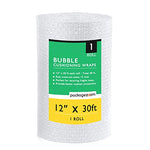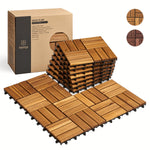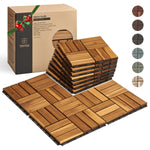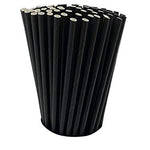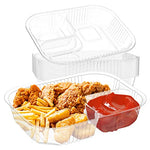You have no items in your shopping cart.
Stretch wrap has become an indispensable packaging material when it comes to securing and protecting palletized goods for shipping or storage. However, not all stretch wraps are the same. There are two main types of stretch wrap available in the market: cast stretch wrap and blown stretch wrap. In this article, we will delve deep into the differences between these two variants, their manufacturing processes, applications, and the key benefits they offer. By the end, you will have a clear understanding of which type of stretch wrap suits your specific packaging requirements.
Cast vs Blown Stretch Wrap: Understanding the Basics
Stretch wrap is a versatile and flexible plastic film used to bundle and stabilize goods on a pallet. Both cast and blown stretch wraps are derived from polyethylene resins, but they are manufactured using distinct processes, resulting in variations in their properties and performance.
The Making of Cast Stretch Wrap
Cast stretch wrap is manufactured using a cast extrusion process. In this method, the molten resin is extruded through a flat die, forming a thin, continuous sheet. The sheet is then cooled rapidly to lock in its properties. This process allows for consistent thickness and excellent clarity in the stretch wrap.
The Making of Blown Stretch Wrap
Blown stretch wrap, on the other hand, is produced through a blown film extrusion process. The resin is melted and extruded vertically through a circular die, creating a cylindrical bubble. The bubble is then cooled and flattened, resulting in a thicker and tougher film compared to cast stretch wrap.
Applications of Cast and Blown Stretch Wrap
Both cast and blown stretch wraps have unique characteristics that make them suitable for various applications. Understanding their specific uses can help you make an informed choice for your packaging needs.
Applications of Cast Stretch Wrap
Cast stretch wrap's excellent clarity and quiet unwinding make it ideal for applications where product visibility is essential. It is commonly used in retail settings, such as supermarkets, where customers need to see the packaged products. Moreover, cast stretch wrap is often preferred for lightweight and small-sized loads due to its high elongation properties.
Applications of Blown Stretch Wrap
Blown stretch wrap's toughness and puncture resistance make it the preferred choice for heavy and irregularly shaped loads. Industries dealing with sharp-edged products or heavy machinery often opt for blown stretch wrap to ensure maximum protection during transit. Additionally, its one-sided cling characteristic allows for superior load containment.
The Advantages and Disadvantages of Cast and Blown Stretch Wrap
Before deciding which type of stretch wrap to use, it's crucial to weigh the pros and cons of both cast and blown variants. Each has its own set of advantages and limitations, depending on your specific packaging requirements.
Advantages of Cast Stretch Wrap
-
Clarity: Cast stretch wrap offers excellent clarity, making it ideal for applications where product visibility is crucial.
-
Quiet Unwinding: The low noise during unwinding of cast stretch wrap makes it a popular choice in noise-sensitive environments.
-
Consistent Thickness: The cast extrusion process ensures uniform thickness throughout the wrap, providing a reliable packaging solution.
Disadvantages of Cast Stretch Wrap
-
Less Puncture Resistance: Cast stretch wrap may offer less puncture resistance compared to blown stretch wrap, making it less suitable for heavy and sharp-edged loads.
-
Lower Load Retention: Cast stretch wrap may have slightly lower load retention capabilities compared to blown stretch wrap.
Advantages of Blown Stretch Wrap
-
Toughness: Blown stretch wrap is tougher and more resistant to punctures, making it suitable for heavy or irregularly shaped loads.
-
One-Sided Cling: Blown stretch wrap clings to itself on one side, providing better load containment and stability.
Disadvantages of Blown Stretch Wrap
-
Higher Noise Level: Blown stretch wrap may produce more noise during unwinding, which can be a concern in certain environments.
-
Inconsistent Clarity: The blown film extrusion process may result in less clarity compared to cast stretch wrap.
How to Choose Between Cast and Blown Stretch Wrap
Selecting the right type of stretch wrap for your specific needs requires careful consideration of various factors. Here are some essential aspects to consider before making your decision.
Consider the Load Size and Weight
The size and weight of the load you are packaging play a crucial role in determining the appropriate stretch wrap. For lightweight and smaller loads, cast stretch wrap with its excellent elongation properties may be sufficient. However, for heavier and irregularly shaped loads, blown stretch wrap's toughness and puncture resistance are more suitable.
Assess Load Containment Requirements
If you need superior load containment and stability, blown stretch wrap's one-sided cling characteristic offers a significant advantage. This feature ensures that the wrap adheres firmly to itself, reducing the risk of the load shifting during transit.
Evaluate Environmental Factors
Consider the environment in which the packaged goods will be stored or transported. For noise-sensitive environments or retail settings, cast stretch wrap's quiet unwinding and clarity make it a better choice. On the other hand, if noise is not a concern, and puncture resistance and toughness are essential, blown stretch wrap might be the preferred option.
Factor in Cost and Budget
Cost is always an important consideration in any packaging decision. Cast stretch wrap is generally more economical than blown stretch wrap, making it an attractive option for budget-conscious operations. However, for applications that demand the extra protection offered by blown stretch wrap, the added cost may be justifiable.
Frequently Asked Questions (FAQs)
Q: Is blown stretch wrap more expensive than cast stretch wrap?
A: Yes, blown stretch wrap is generally more expensive than cast stretch wrap due to its tougher and thicker film, which requires additional resources during the manufacturing process.
Q: Can I use cast stretch wrap for heavy loads?
A: While cast stretch wrap offers good elongation properties, it may not be the best choice for heavy loads. Blown stretch wrap, with its superior toughness and puncture resistance, is better suited for such applications.
Q: Which type of stretch wrap is better for retail packaging?
A: Cast stretch wrap is often preferred for retail packaging due to its excellent clarity, allowing customers to see the products inside the wrap.
Q: Does blown stretch wrap produce more noise during unwinding?
A: Yes, blown stretch wrap may produce more noise during unwinding compared to cast stretch wrap. This should be taken into account when considering noise-sensitive environments.
Q: Can I recycle both cast and blown stretch wraps?
A: Yes, both cast and blown stretch wraps can be recycled. However, it is essential to follow local recycling guidelines and ensure the stretch wraps are clean and free from contaminants.
Q: Are there any eco-friendly alternatives to traditional stretch wraps?
A: Yes, there are eco-friendly stretch wrap options available, such as biodegradable or compostable stretch wraps, that can help reduce environmental impact.
Conclusion
In conclusion, both cast and blown stretch wraps offer unique features and benefits, making them suitable for different packaging applications. Understanding the differences between the two and considering your specific packaging needs is essential in making the right choice. Cast stretch wrap, with its clarity and quiet unwinding, is ideal for retail settings and lightweight loads. On the other hand, blown stretch wrap's toughness and puncture resistance make it a better option for heavy and irregularly shaped loads. Assessing load size, containment requirements, environmental factors, and budget considerations will help you select the most appropriate stretch wrap for your business. Whether you opt for cast or blown stretch wrap, proper packaging will ensure that your goods reach their destination safely and securely.



